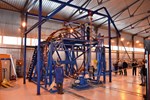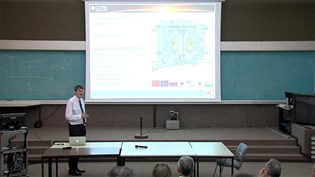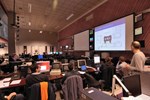Every working community must concern itself with safety, quality, security, occupational health and—more and more so—with environmental issues. The specific nature of nuclear activities makes this demand even more imperative: errors and approximations are not allowed in our trade.
With respect to these issues, Article 14 of the ITER Agreement states that the ITER Organization "shall observe applicable national laws and regulations of the Host state in the fields of public and occupational health and safety, nuclear safety, radiation protection, licensing, nuclear substances, environmental protection and protection from acts of malevolence."
Last October, the Director-General approved a top-level Integrated Safety, Quality and Security Management Policy summarizing the ITER Organization's commitment to the observance of this very important Article.
This policy will be our guideline for the years to come. To that end, we have devised and formalized an integrated management system to make sure that the policy is applied at every level of our Organization's activities, and that performance, in regard to these objectives, keeps improving over time.
The policy is the starting point for every part of the integrated management system: it is the reference document for the definition of individual accountability as well as for the definition of procedures that all employees shall take into account in their daily activities for consistent prevention of all work-related injuries, accidents and pollution.
That said, the challenge of safety, quality, security, occupational health and environmental protection reaches far beyond the mere observance of a set of laws and regulations, however detailed and stringent. It must become a matter of personal commitment and duty for each and every one of us.
Whether we belong to ITER or to a Domestic Agency; whether we are a supplier or a contractor, we are all active members of the ITER nuclear installation. It is our common duty, hence, to make sure that this policy cascades down to all levels of our supplier chain.
As of 1 July 2013, the new version of the French government's Quality Order (Arrêté du 7 février 2012 fixant les règles générales relatives aux installations nucléaires de base) will be applicable: this includes a clear requirement to implement an integrated safety policy and management system that, beyond nuclear safety, encompasses fields that were not previously included in its scope, such as occupational safety and health, environment and security.
By integrating all these aspects this is precisely what the new ITER policy does, well ahead of the French government's deadline.






